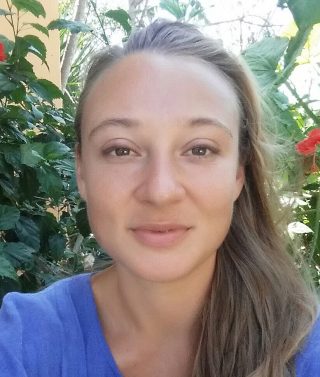It has been nearly a month since our 6-day transit aboard the R/V Falkor, mapping the Cascadia Margin and recording methane seeps. Since returning back to Paris, I have watched my little studio flat transform into a creative sanctuary of color, as I fill it with an increasing number of paintings inspired by the experience and in particular the vibrant multibeam sonar technology imagery.
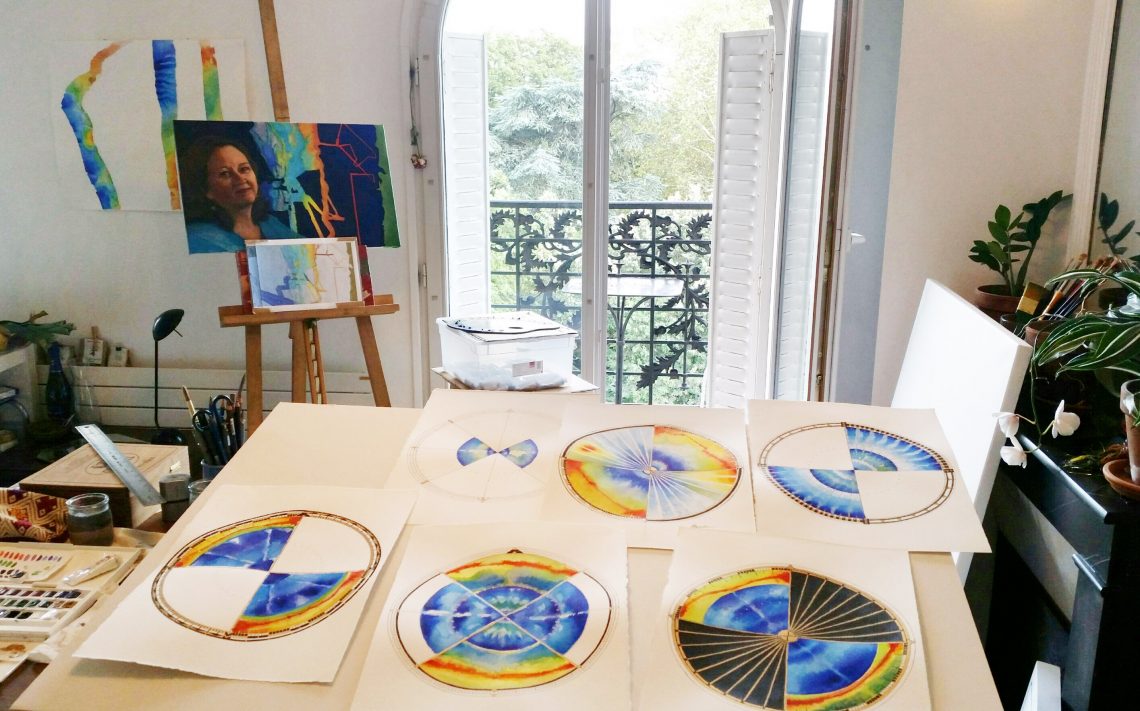
One project I am working on is painting a portrait (in oil) of the chief scientist aboard our mission, Susan Merle, juxtaposed with bathymetry imagery from the Cascadia Margin: The Woman and her Work.
As I bring the image of Susan to life in this European landlocked city – a completely contrasting context to our shipboard experience – it is fun to feel her presence close, and by extension, that of the other participating artists and the Falkor crew. Every time I pick up my paintbrush I feel myself back on the ship, surrounded by water, immersed in learning, participating in an energized bubble connecting creativity, science, technology and research. It is quite remarkable how just a few days managed to create what I believe will be lifelong friendships and hopefully continued collaborations.
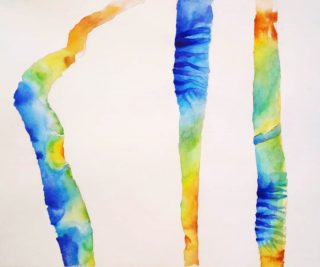
Colorful Expressions
I cannot help but draw a parallel between the development of a painting and the seafloor mapping process, in itself a work of art in its own right. Both create an image out of essentially nothing. We start with a blank canvas and only a faint idea of what might lie deep below the ocean surface or what can be created, but neither actually ever evidenced before by human eyes. It is the process that determines what materializes, and suddenly the monochromatic deep blue becomes a colorful expression of ridges and canyons, deep dips and escalating slopes, seeping seafloor and rising bubbles.
My blank linen shifts into a flat burnt umber sketch, suggesting and giving loose structure to what will develop. It then builds up into a network of graded values and assorted skin tones – set off by shocks of cadmium orange or viridian green – that create the necessary depth and form to transform the flat surface into facial features and an eventual portrait of Susan. I can almost hear her infectious laughter and playful remarks exploding out of the canvas: “Come on, methane seeps!”
The other body of work I am developing is watercolor-based, which appropriately keeps me connected to the water element. Included in this is a series I am calling my True North series, which incorporates multibeam sonar imagery into the form of a compass rose.
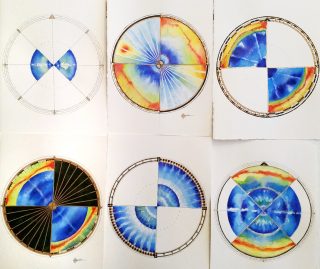
Finding the Right Path
By the nature of the watercolor medium, I am never fully certain how the images will turn out, because, at a certain point, the water and the color take on a life of their own, and the final outcome is always a bit of a surprise. I can only guide the process, but I can not control the precise outcome.
As an expression “True North” refers to finding the right path. Through the collection of data to help us better understand the seafloor, we are enabling management and decision-making to be based on knowledge, rather than guesses or assumptions. This is facilitated through the use of the research vessel, the technology it is equipped with, and the human interaction with the data – consolidating and interpreting it so that the raw data is useful and applicable.
I feel this is particularly important when we approach the very real potential that deep-sea mining could become much more prevalent in the near future. And especially when considering that we really have no idea of the consequences that deep-sea mining may have on the global ocean environment, the health of its species and biodiversity, and – by extension – the health of the planet at large, including human health.
Hopefully, at the very least, by the gathering of data and knowledge of what exists at the bottom of our oceans, we can encourage such inevitable developments to proceed in the most sustainable, least impactful way possible. Decisions can be guided, and recommendations empowered, by knowledge and science.
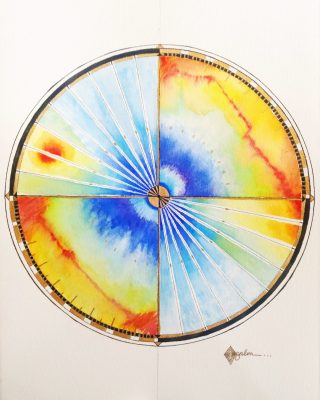
Every time I approach a canvas it is a process of discovery – discovering my subject, nature at large, the medium, and also myself. I never know exactly what will emerge during this process, and that is precisely what keeps it exciting and worthwhile. The hoped-for end goal is always to create something of beauty, something of meaning, or something of impact, but the process itself is equally as important. I hope that we (as a human race) can continue to respect the magnificence and fine balance of the natural order, and to define the right processes to best keep it intact and vibrant for generations to come.
